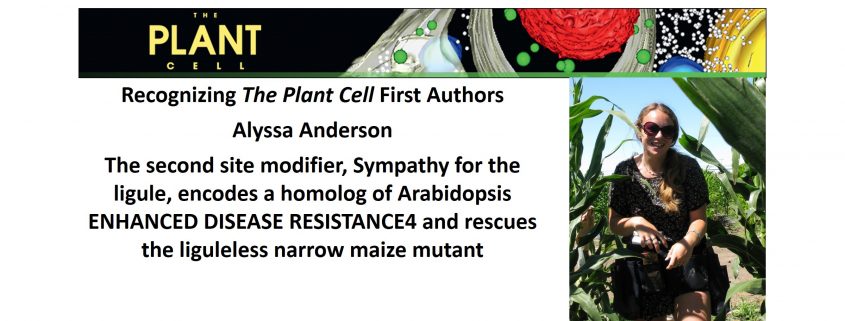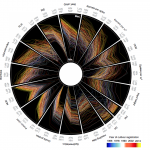Recognizing Plant Cell first authors: Alyssa Anderson
Alyssa Anderson, first author of The second site modifier, Sympathy for the ligule, encodes a homolog of Arabidopsis ENHANCED DISEASE RESISTANCE4 and rescues the liguleless narrow maize mutant
Current Position: Graduate Student, University of California, Berkeley
Education: PhD, University of California, Berkeley
Non-Scientific Interests: reading sci-fi and fantasy novels, baking, hula-hooping
Brief Bio: I completed my B.A. at Cornell University in 2013, where I majored in both biology and philosophy. While there, I worked as an undergraduate researcher in the Turgeon lab, under the tutelage of Thomas Slewinski. We published on the effects of the classically studied root development mutants, Scarecrow and Shortroot, on Kranz anatomy. For my PhD work I moved across the country to the sunny University of California, Berkeley, and joined Sarah Hake’s lab in 2015. With Sarah’s guidance, I have just completed investigations into another development mutant, Liguleless narrow (Lgn-R). I examined the pleiotropic phenotype from the genetic and phosphoproteomic perspectives and identified a background specific modifier of the Lgn-R phenotype, Sympathy for the ligule, a maize homolog of Arabidopsis ENHANCED DISEASE RESISTANCE4. Throughout my graduate career I was also an inaugural member of the science communication group CLEAR lead by Peggy Lemaux. With this group, I developed fun, factual, and approachable ways to explore science on a number of platforms from YouTube videos to interactive farmer’s market displays. Thanks to this group, public outreach has been just as crucial to my development as a scientist as my time spent at the bench.




